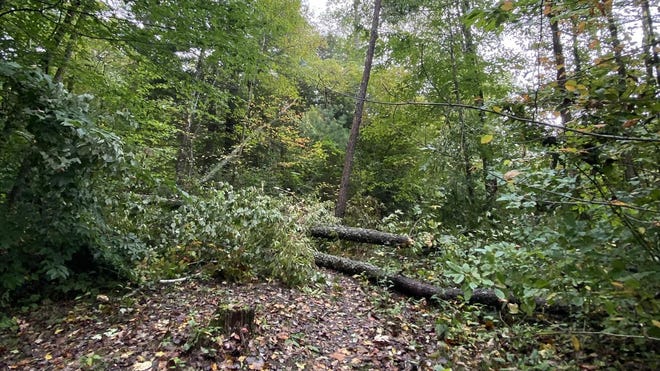Travelers hoping to hike the Appalachian Trail are being asked to stay away from its southern portion, which is still reeling from Helene.
Helene was no longer a hurricane by the time it reached the start of the storied trail in North Georgia last week, but its extreme rains caused devastating floods across the Southeast.
The Appalachian Trail Conservancy, which oversees the management and conservation of the trail stretching from Georgia to Maine, shared in a news release:
Hurricane Helene is the largest natural disaster – in terms of geographic footprint – to impact the Appalachian Trail in its 100-year history. While it is still too early to understand the extent of the damage to the A.T. itself, hundreds of thousands of people throughout the Southern Appalachians – including ATC staff – have been impacted by flooding, strong winds, tornadoes, downed trees, and impassable roadways, and are without power, clean water, internet, and other essentials.
Several national forests along the trail are closed, and other areas are discouraging visitors so they can focus on recovery.
Where was the Appalachian Trail affected by Helene?

Hikers are urged to avoid northbound mile 0.0 on Georgia’s Springer Mountain to mile 864.6 in Rockfish Gap, Virginia.
“Although not all areas in this section are officially closed, there is still a risk of landslides in many areas, much of the A.T. in the south is inaccessible due to road closures, and emergency responders are at max capacity,” the ATC posted in an update Wednesday. “There also may be dangers on the Trail from the storm like downed trees, severe erosion, washed out bridges, and swollen creeks and streams.”
Miracles in the mud:Heroes, helping hands emerge from Hurricane Helene aftermath
How long will these areas be closed?
It’s not clear how long it will take to reopen the full trail.
“We also ask for patience as recovery and relief efforts in the impacted communities continue and critical infrastructure is restored,” Appalachian Trail Conservancy Communications Director Ann Simonelli told USA TODAY by email. “Once we can safely access the A.T., the ATC and our partners will begin to fully evaluate the Trail’s conditions.”
The ATC is maintaining a list of trail closures on its website. Updates are also available on the websites of the various public lands through which the trail crosses. Great Smoky Mountains National Park, for instance, is discouraging hiking and backcountry travel for the time being, and Nantahala and Pisgah National Forests are temporarily closed.
What can hikers do in the meantime?
Hikers who had been working to achieve 2,000-miler status for completing the entire Appalachian Trail may suspend their hikes and pick up where they left when it’s safe to do so.
“They will have 12 months from the date they choose to resume their hikes to complete the remainder of their journeys and still be recognized by the ATC as a thru-hiker,” according to the ATC, which also shared resources for helping residents of communities recover from the storm.
